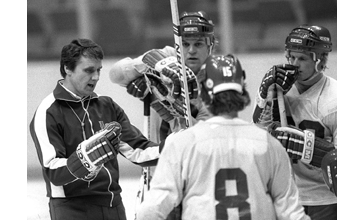Why Customers Make Great Coaches
In several of my recent posts, I’ve discussed the value of using voice of the customer (VOC) technologies as a tool for improving the processes that drive customer experience. However, I’ve paid little attention to what they can do for the people who are essential to delivering a truly exceptional customer experience. My bad. Time to fix that.
As it turns out, with the aid of a comprehensive VOC strategy, your customers make excellent coaches for frontline personnel. Why? The answer is best demonstrated by the ADKAR® model of change management.
ADKAR stands for Awareness, Desire, Knowledge, Ability and Reinforcement. Created by Prosci, an American consulting group specializing in change management projects, the ADKAR model outlines the vital personnel-focused attributes of a successful project, complementing the progressive stages of such a project (from identifying the business need, to defining the scope and purpose of the project, to designing the solution, to implementing the solution, to assessing and making necessary adjustments post-implementation). Businesses such as Ashland and University Hospitals, among many others, have attributed success to this model.
Observe how well ADKAR outlines the relationship between VOC and “coaching” customer experience personnel:
- Awareness. When you measure customer satisfaction rates, you can set targets for future performance. Communicating these targets conveys a message of “this is what’s important to us” to your customer-facing employees. It sets the tone, internally, for a customer-centric operation.
- Desire. Having communicated targets, stressing the value of VOC in planning and gamifying results ensures employees will value every interaction with your customers, perhaps even driving them to conceive innovative new ways to improve the customer experience. (Who better to find a way to improve routines than those who perform said routines, and are most directly impacted by their outcomes on a daily basis?)
- Knowledge. VOC analytics help uncover root causes of customer satisfaction and dissatisfaction, from the process level to those resulting from interactions with individual employees. This enables specific guidance regarding what all employees do best, and what they can improve, as well as what works and does not work for each employee uniquely. Furthermore, managers can drill down to individual interactions and verbatim customer comments, to say “doing this left a positive impression, but saying that did not.”
- Ability. With full knowledge of what customers have to say about them, and guidance towards the actions and attitudes that drive customer satisfaction, each employee can hone their skills moving forward, and if this results in improvement (as reflected by customer feedback), the organization might become comfortable with allowing those employees more leeway in alleviating various customer issues. (What could a manager do if he or she were devoting less time to approving frontline agents’ requests for satisfying individual customers? Surely, a customer would be happiest if the person they’ve been speaking to can settle an issue immediately and autonomously.)
-
Reinforcement. Rewarding employees for achieving customer satisfaction targets motivates personnel to internalize the customer-centricity inherent to such targets. Building a customer-centric environment will yield continuous organizational improvements and opportunities to generate long-term customer loyalty.
This video provides a visualization of how VOC data lends itself directly to coaching employees, and driving employee engagement to achieve the goals of your customer experience strategy:
Voice of the Customer technology has the power to enrich not only your customer-facing processes, but also your customer-facing people. Will you let the customer lead your team to a win?
To learn more about the many ways you can engage employees to achieve an effective customer experience program, join us Wednesday, June 29 for our online presentation, “MVP (Most Valuable Personnel): The Employee Impact on Customer Experience.”



